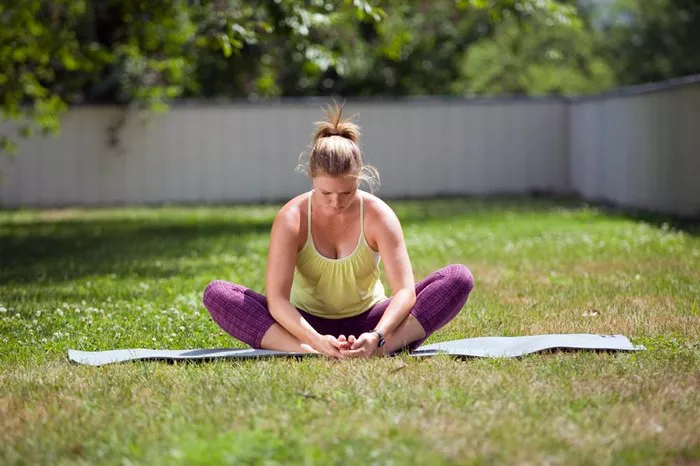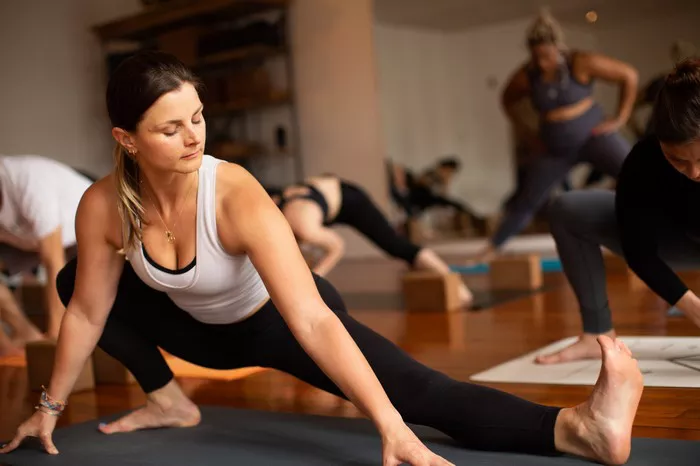Yoga is an ancient practice that has evolved over centuries to offer both physical and mental benefits. It brings together strength, flexibility, balance, and mindfulness in a unique way. However, for many, some yoga poses can seem impossible to master. As a yoga practitioner, you may have come across poses that challenge your flexibility, strength, or even your mental focus. It’s not unusual to struggle with specific asanas, especially when you first encounter them in your practice. But why are certain yoga poses so difficult, and what makes them so challenging to perform?
In this article, we will explore what makes certain yoga poses particularly difficult, why some people struggle with them, and how you can work through these obstacles. Whether you’re an advanced practitioner or a beginner, understanding the factors that contribute to the difficulty of certain asanas will help you take a more informed and patient approach. The article will also provide practical advice and tips for overcoming these challenges so you can gradually unlock the potential within each pose. By the end of this piece, you will have a deeper understanding of difficult yoga poses and how to approach them with more ease and confidence.
What Makes Yoga Poses So Difficult?
The Physical Demands of Advanced Yoga Poses
Yoga poses (asanas) can be broken down into simpler movements, but some advanced poses require an extraordinary combination of flexibility, strength, balance, and coordination. These physical demands often explain why certain yoga poses are perceived as difficult. When you look at advanced poses like Handstand (Adho Mukha Vrksasana), King Pigeon (Kapotasana), or Scorpion Pose (Vrschikasana), it’s clear that they challenge your entire body in ways that simpler poses like Child’s Pose or Mountain Pose do not.
Flexibility is a key requirement for many advanced poses. For instance, King Pigeon Pose requires deep flexibility in the hips, lower back, and shoulders. This deep stretch can be overwhelming if your body is not accustomed to that kind of range of motion. Similarly, backbends like Wheel Pose (Urdhva Dhanurasana) require a great deal of flexibility in the spine and shoulders.
In addition to flexibility, strength is another critical factor. In many advanced poses, you must be able to support your own body weight, often in positions that require engaging multiple muscle groups. For example, to hold Handstand or Crow Pose (Bakasana), you need to have solid upper body strength, core stability, and a deep sense of balance. Without sufficient strength, you may find yourself struggling to maintain the pose or feeling exhausted before you can complete the full expression.
Finally, balance plays a major role in the difficulty of certain poses. Even if you have the strength and flexibility, many advanced poses require a finely tuned sense of balance to avoid falling or collapsing. In poses like Handstand, maintaining a vertical alignment and staying steady requires the engagement of not just the core but also the mind. Without balance, these poses may feel unachievable, or they might leave you feeling unstable and frustrated.
The Psychological and Mental Factors
While the physical aspects of difficult yoga poses are often what make them seem challenging, the mental component cannot be underestimated. Yoga is not just a physical practice; it is a practice that brings awareness to the mind and spirit as well. Some poses require intense concentration, focus, and sometimes a lot of mental courage to overcome feelings of fear, doubt, or self-consciousness.
Many practitioners find that poses like Handstand or Crow Pose become particularly daunting due to the fear of falling or the fear of failure. These poses require a great deal of trust—trust in your body’s strength and flexibility, and trust in your ability to overcome your own mental limitations. It’s not uncommon to feel nervous before attempting an inversion or an arm balance because the body’s natural instinct is to protect itself from injury. The fear of falling or not being able to hold the pose can be a significant barrier.
Furthermore, mental focus and concentration are key for mastering difficult poses. Poses like Scorpion Pose or Wheel Pose require you to not only engage various muscle groups but also maintain a sense of awareness and mindfulness. If your mind is wandering or if you’re distracted, it’s easy to lose alignment or fall out of the pose. Breath control plays a significant role in overcoming these challenges as well. Many advanced poses require deep and steady breathing to maintain both physical strength and mental focus.
How to Overcome the Challenges of Difficult Yoga Poses?
Gradual Progress and Consistency
One of the most effective ways to tackle difficult yoga poses is to adopt a mindset of gradual progress. While it’s tempting to jump straight into advanced asanas, it’s important to build a foundation of strength and flexibility that will support your practice over time. As with any skill, mastery takes patience and consistency. Just as you wouldn’t expect to run a marathon after one week of training, you shouldn’t expect to master advanced poses without first cultivating the necessary physical and mental groundwork.
For example, if you’re working towards Handstand, begin with basic poses that build the strength required for the pose, such as Plank Pose (Phalakasana), Downward Dog (Adho Mukha Svanasana), and Dolphin Pose. These poses will help develop upper body strength, core stability, and balance, all of which are crucial for holding a handstand. Likewise, if you’re trying to improve flexibility for deep backbends like Wheel Pose, incorporate poses like Cobra Pose (Bhujangasana), Bridge Pose (Setu Bandhasana), and Upward Dog (Urdhva Mukha Svanasana) into your routine. Consistently practicing these foundational poses will help prepare your body for more advanced postures.
Consistency is another key factor. It’s not enough to practice challenging poses just once in a while. To make real progress, regular practice is essential. Even if you only practice for 15 to 30 minutes a day, committing to regular yoga practice allows your body to gradually adapt and build the strength, flexibility, and mental focus necessary for advanced poses. As you practice regularly, you’ll begin to notice improvements in your ability to execute the difficult poses you once struggled with.
Modify, Use Props, and Listen to Your Body
Another important strategy for overcoming difficult poses is to modify the pose to suit your current level of ability. Yoga is all about adaptation and finding what works best for your body, and modifications allow you to experience the benefits of a pose without pushing yourself beyond your limits. For example, if you are working on King Pigeon Pose but lack the flexibility in your back and shoulders, try using a yoga block or bolster to support your back knee or to prop up your hands while you work on opening your hips.
Using props such as blocks, straps, or blankets can also make difficult poses more accessible. Blocks can provide extra height and stability, while straps can assist with stretching and deepening your flexibility. For example, if you are working on a forward fold and can’t reach your feet, using a strap around the soles of your feet can help you deepen the stretch while keeping your spine long and your body safe.
Lastly, listening to your body is crucial. If you’re experiencing discomfort or pain, it’s important to step back and assess what might be causing the issue. Are you engaging the wrong muscles? Are you trying to push too hard or too fast? Over time, your body will let you know when you are ready to progress further. If a pose feels too intense, take a step back and work on building more strength and flexibility before attempting it again. Yoga is not about forcing yourself into a pose; it’s about cultivating awareness and honoring your body’s limits.
See Also: Can Yoga Poses in Bed Help You Sleep Better?
The Importance of Mindfulness and Patience
It’s important to recognize that yoga is a journey, not a destination. The challenge of difficult poses is not just physical but also mental and emotional. When attempting advanced poses, it’s easy to become frustrated if you don’t see immediate results. However, patience and mindfulness are key to overcoming these challenges.
Focus on being present during your practice and embracing the process. Each time you step onto your mat, try to let go of the pressure to perform and instead focus on the sensation of each movement and breath. Celebrate the small victories, whether it’s holding a pose for a few more seconds or feeling more open and flexible. Over time, these small steps will add up, and you’ll find that the difficult poses that once felt impossible are now within your reach.
In addition to patience, mindfulness can help you stay calm and focused. The mental challenge of yoga poses is as significant as the physical one. Maintaining deep, controlled breathwork while holding a challenging pose can help you stay grounded and present. When you manage to maintain calm and focus, even during difficult poses, you will naturally develop more resilience, both in your practice and in your life.
Conclusion
Yoga offers a vast array of poses, ranging from simple stretches to complex, challenging asanas. The difficulty of certain yoga poses often stems from the combination of flexibility, strength, balance, and mental focus required. While some poses seem nearly impossible, they are not out of reach for those who approach them with patience, consistency, and an open mind.
By building a strong foundation, using modifications and props, and staying patient with yourself, you can gradually overcome the challenges posed by difficult yoga poses. Remember that progress in yoga is not measured by how well you perform a particular asana, but by your dedication to the practice, your ability to listen to your body, and your willingness to embrace each step along the journey.
You Might Be Interested In:

















